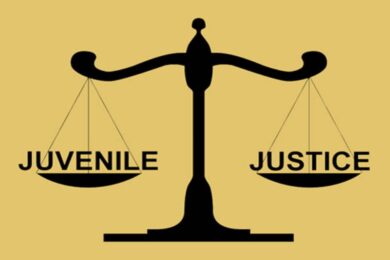
Introduction
The Indian Evidence Act, 1872 is a cornerstone of Indian legal procedure, providing the framework for what evidence is admissible in courts and how it must be presented. Enacted during British rule, the Act has governed judicial proceedings in India for over 150 years. Despite its colonial origins, the Act has proved remarkably enduring due to its rational structure, clarity, and adaptability.
However, with the rise of digital technology, changes in social norms, and developments in global jurisprudence, questions arise regarding the continued relevance of a 19th-century law in a 21st-century legal system. This blog examines the structure, key provisions, modern relevance, and upcoming reforms related to the Indian Evidence Act.
1. Historical Context and Structure
The Indian Evidence Act, drafted by Sir James Fitzjames Stephen, was enacted on 1st September 1872. Its purpose was to consolidate and codify the rules of evidence in Indian courts, replacing the varied and inconsistent customs used earlier.
Structure of the Act
The Act is divided into three parts and contains 11 chapters and 167 sections:
Part I: Relevancy of Facts (Sections 1–55)
Part II: On Proof (Sections 56–100)
Part III: Production and Effect of Evidence (Sections 101–167)
It applies to all judicial proceedings in Indian courts (except affidavits and arbitration proceedings).
2. Key Concepts under the Indian Evidence Act
a. Relevancy and Admissibility
Only relevant facts are admissible in court.
Section 5: Evidence may be given only of facts in issue and relevant facts.
b. Types of Evidence
Oral Evidence: Direct testimony by a witness.
Documentary Evidence: Written documents, electronic records.
Primary and Secondary Evidence: Originals vs. copies (Sections 61–66).
c. Burden of Proof
Lies on the party who asserts a fact (Sections 101–114).
Special provisions exist for shifting the burden in certain cases (e.g., dowry death).
d. Presumptions
Courts may presume certain facts unless disproved.
Types:
May Presume
Shall Presume
Conclusive Proof
e. Expert Evidence
Section 45: Opinions of experts (handwriting, fingerprints, medical reports) are admissible.
f. Examination of Witnesses
Examination-in-chief, cross-examination, and re-examination (Sections 137–138).
Hostile witness, leading questions, and witness credibility are also addressed.
3. Digital Age and the Evidence Act
The Act has undergone important adaptations, especially to include electronic evidence, with key updates via:
a. Information Technology Act, 2000
Inserted Sections 65A and 65B for electronic records.
Provided rules for admissibility of digital documents, emails, CCTV footage, etc.
b. Section 65B Certificate
For electronic evidence to be admissible, it must be accompanied by a certificate verifying its authenticity.
Vital in cybercrime, banking fraud, and surveillance cases.
c. Supreme Court Landmark Judgments
Anvar P.V. v. P.K. Basheer (2014): Reiterated mandatory requirement of Section 65B certificate.
Arjun Panditrao Khotkar v. Kailash Kushanrao Gorantyal (2020): Clarified procedure and exceptions for digital evidence.
4. Challenges and Criticism
a. Complexity in Digital Evidence
Procedural hurdles in acquiring and authenticating digital proof.
Interpretation of Section 65B still causes confusion.
b. Outdated Terminology
Use of colonial expressions and outdated societal references.
c. Lack of Clarity in Burden of Proof
In sexual assault or dowry cases, inconsistencies in application affect justice delivery.
d. Witness Protection and Hostility
No robust statutory witness protection mechanism.
High rate of hostile witnesses due to fear or coercion.
e. Documentary Fraud
Easy manipulation of documents and certificates.
Need for modern verification tools.
5. Reforms and Bharatiya Sakshya Bill, 2023
Recognizing the limitations of the 1872 Act, the government introduced the Bharatiya Sakshya Bill, 2023 to replace the Indian Evidence Act. It is part of a broader effort to decolonize Indian criminal laws, along with new bills to replace IPC and CrPC.
Key Features of the Bharatiya Sakshya Bill
Simplified language and structure.
Enhanced focus on electronic and digital evidence.
Allows for admissibility of forensic and scientific evidence with better safeguards.
Replaces archaic phrases with modern terminology.
Adds provisions to better protect victim identity and witness safety.
This Bill, if enacted, would bring India’s evidentiary laws in line with global standards and modern technological realities.
6. Comparative Analysis with Other Countries
United States
The Federal Rules of Evidence (FRE) emphasize liberal admissibility and party-driven discovery.
More flexibility in introducing digital and hearsay evidence with safeguards.
United Kingdom
The Civil Evidence Act, 1995 allows hearsay evidence under conditions and recognizes electronic records as standard admissible documents.
India
Still adheres to stricter admissibility standards.
Recent reforms aim to reduce procedural rigidity without compromising fairness.
7. Importance of the Evidence Act in Criminal and Civil Trials
The Indian Evidence Act remains indispensable to:
Ensuring fair trial and due process.
Preventing fabrication and manipulation of facts.
Enabling courts to differentiate between truth and falsehood.
Offering a standardized legal framework for lawyers and judges.
From rape cases requiring corroborative evidence, to property disputes over document authenticity, to cybercrime involving IP logs, the Evidence Act is central to modern legal practice.
8. Recommendations for Future
To improve the evidentiary framework, the following are necessary:
✅ Update procedural rules to match digital advancements.
✅ Train judiciary and law enforcement in handling digital and forensic evidence.
✅ Strengthen witness protection laws.
✅ Simplify language for layperson understanding.
✅ Ensure quicker certification and authentication procedures for e-documents.
Conclusion
Despite being over 150 years old, the Indian Evidence Act, 1872 has shown remarkable resilience and flexibility. It remains central to justice delivery in both criminal and civil matters. However, in a rapidly evolving digital and legal ecosystem, it is critical to revisit, revise, and modernize the evidentiary laws. The Bharatiya Sakshya Bill, 2023, holds promise to align India’s legal system with 21st-century needs, ensuring that the pursuit of truth remains both just and effective.






No Comments